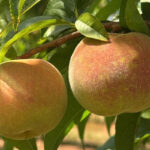India: Chile overtakes NZ as leading Southern Hemisphere kiwifruit supplier

 Chile has this year overtaken New Zealand as the leading Southern Hemisphere kiwifruit supplier to the Indian market for the first time ever, according to leading produce company IG International.
Chile has this year overtaken New Zealand as the leading Southern Hemisphere kiwifruit supplier to the Indian market for the first time ever, according to leading produce company IG International.
Tarun Arora, director of the India-based importer-distributor, said that by the end of June Chile had supplied 3,800 metric tons (MT) of kiwifruit while its rival had supplied 2,800MT.
During an interview with Fresh Fruit Portal, Arora also spoke about the huge effect U.S. tariffs could have on apple supply dynamics, and the progress IG had been making with blueberry plantings - its first foray into fruit production.
Kiwifruit competition intensifies
Strong competition between Chile and New Zealand has led to far greater supplies than normal in India this year, and Arora said he wouldn't be surprised if total imported volumes during 2018 end up more than 40% higher year-on-year.
"The kiwifruit market is definitely under tremendous stress because none of the nations including Chile and New Zealand want to give away the market share they have managed to attain in India," he said.
"So there is an oversupply situation which is putting pressure on prices."
This is the first time in Chile's four-year history in the Indian market that it has surpassed New Zealand, which has been shipping to the market for around 15 years.
Arora said that in general the Indian kiwifruit market has been growing at an impressive annual rate of 20%, with volumes last year reaching 24,000MT. A little under half of that was supplied by Iran, which has the logistical advantage of being just four days away.
Behind Iran was New Zealand and then Chile, but Arora said the South American country would likely take the number-two spot this year.
"This year we are forecasting around 30,000MT of total kiwifruit imports, but considering how heavily both origins are shipping I wouldn't be surprised if it surpassed 35,000MT," he said.
Arora also believed that eventually either Chile or New Zealand would have to give way.
"It’s very difficult to forecast at this moment, considering that what happened this year was not expected. Both Chile and New Zealand have been more aggressive, so it will be very interesting to see how the market behaves in the coming years," he said.
"Obviously both will remain in the market, but one has to settle for a smaller market share."
Green varieties remain the most popular in India, he added.
Tariffs would cause sharp decline in U.S. apples
While not under the same pressure as the kiwifruit market, the Indian apple market has also seen heavy supplies this year.
"We've already seen two back-to-back months of 65,000MT each in May and June, which is very large. Generally, you won't see this kind of volume coming into India around the month of July because it's very close to the Indian apple season," he said.
"Everybody has definitely taken a higher risk - anticipating a later Indian crop and anticipating U.S. tariffs to increase on August 4 - so it will be interesting to see what happens to the apple market in August. There will be more product in storage than what an importer would normally carry in any other year."
The Indian Government has said it plans to increase tariffs on U.S. apples by 25% next month in retaliation for the U.S. raising duties on steel and aluminum imports. This would mean U.S. apples face a 75% tariff coming into India while everyone else remains on 50%.
The development comes during a year that saw India become the U.S. state of Washington's number-two market by mid-May, putting it ahead of Canada and second only to Mexico.
Arora predicted the tariff rise would lead to a dramatic drop in U.S. apple volumes and a possible destabilization of the Indian market, which receives significant supplies of U.S. Red Delicious - the favorite among Indian consumers.
If the tariff were to persist for a long time there would likely be "big changes" for the market, he said.
"This year India has imported a total of 8 million cartons from the U.S., and you could possibly see that going down to 2 or 3 million cartons," he said, explaining India was a price-sensitive market.
"25% is a big increase and there are a lot of alternative markets that are willing to supply India, but they are not able to compete with the U.S, very well at the moment," he said.
While there will also be advantages for Southern Hemisphere apple producers, Arora said European countries like Poland, Italy and Belgium would be the biggest winners.
"They [the U.S. and Europe] are both Northern Hemisphere, and they compete with each other. There would therefore be a much bigger playing field for Europe - they could start from October and go until maybe June, which is a big window," he said.
Blueberry plantings in India
Early this year IG planted the first six hectares of blueberry production through a joint venture announced last year with Australian company Mountain Blue.
The two companies are creating a new company called BerryLife, and plan to plant 50 acres of blueberries in Western India over the next couple of years.
"We are planting a little bit at a time. We have started with six hectares, and then we will plant 22 hectares next year and another 22 the year after that," he said.
"Mountain Blue have been doing really a fabulous job. They know a lot about blueberries, so we've been very happy," he said, noting the first small harvest of fruit could take place next year.
He expects the fruit to be harvested between around February through June - a time when imports into India are normally "negligible".
He said Chilean volumes are limited due to the fumigation protocol, while India does not yet have agreements with Mexico or Peru, and the U.S. normally receives attractive prices when its domestic season starts.
"So it [Indian blueberries] will come at a good time," he said.
Photo: Shutterstock












































